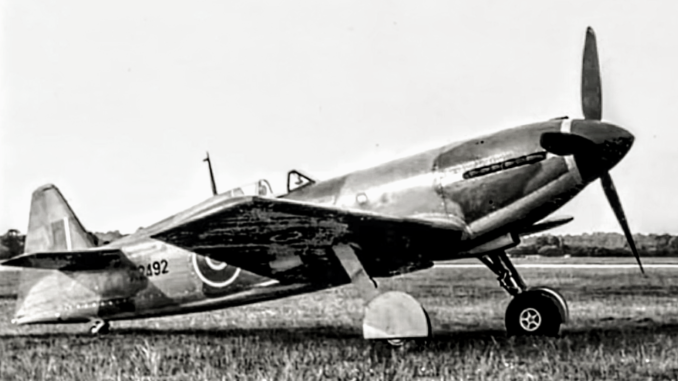
Tragedy is unpredictable. It can be devastating to those who witness it, and to those heartbroken with grief and loss. In the long term, however, sometimes good things can ultimately come from catastrophe. In this instance, an accident that took one life became the inspiration that saved thousands of lives.
James Martin (1893 – 1981, aged 87 years), born in what is now Northern Ireland, possesed a drive to make gadgets even as a teenager. He became an inventor and accomplished engineer, immigrating to England possibly around the time of the First World War – the timing and sequential order of these events is not made clear by any of various sources. Martin eventually established his own engineering firm, which began building aircraft in 1929. At some point, Martin and Baker became very good friends and colleagues.
Valentine Baker (1888 – 1942, aged 54 years), born in Wales, had an unusual career in the British military during the Great War, having served in the Royal Navy Air Service, the British Army, and finally the Royal Flying Corps. Assigned as a ‘despatch rider’ (message courier) while in the Navy, he took a bullet to the neck at Gallipoli. Military doctors advised him the slug was too close to his spine to safely remove without risking his life, whereupon he made the decision to leave it be. That bullet stayed there the rest of his life, which is remarkable given his subsequent dangerous and active occupations. After discharge from the Navy, he was granted a commission as temporary second lieutenant, Royal Welch Fusiliers (British Army), late 1915. The following summer he was assigned to the School of Aero Flying, becoming a Royal Flying Corps pilot and a combat ace. He was transferred to the RAF (Royal Air Force) when it was formed in April 1918, and attained the rank of Captain before leaving the service in 1921. The Air Ministry authorized Baker to retain the title of Captain in civilian life, in honor of his exemplary service.
Baker joined Martin in 1934 as a test pilot to assist in the development and testing of aircraft. The two friends co-founded a new firm, Martin-Baker Aircraft Company. Through the remaining years of that decade, the small outfit worked on fighter aircraft prototypes for the Air Ministry. James Martin was a perfectionist, as well as an innovator. His designs incorporated new features, and the production work was always top quality. Martin constantly found ways to improve on the product, and Baker supported Martin’s drive by providing feedback and insight from a pilot’s point of view.
In September 1942, the RAF ordered flight testing of the firm’s third prototype, the Martin-Baker MB 3. Over the course of several days, military observers had Baker put the fighter through the paces to see how it measured up to their requirements. On the tenth flight, shortly after takeoff with only about 100 feet of altitude, the aircraft’s engine (itself a prototype from a different manufacturer) siezed up, forcing an emergency landing. Baker headed for a small field within reach of the powerless MB 3. As the plane touched down, a wingtip hit a tree stump, causing it to cartwheel, crash, and explode. Martin saw it happen, saw his good friend die. He was devastated.
Determined to prevent other pilots from needlessly dying, Martin turned much of his attention to a project he’d started several years prior. He wasn’t the first to design and build an aircraft ejection seat, but his tenacity to build the best, highest quality products possible has made the name Martin-Baker the industry leader for decades. From early jet fighters in 1946, right up to the present F-35 Lightning II, Martin-Baker ejection seats have been the standard of excellence found in most British and American fighters, as well as those of scores of other nation’s aircraft. Since 1946, the company has built more than 70,000 ejection seats for 93 air forces all over the globe, which to date have saved the lives of over 7,600 aircrew members in dire emergency situations.
“The Martin Baker MB.3; Heavy Hitting Fighter That Has Saved Thousands” (7:00)
“Martin-Baker – Ejection Seat History”(1940s documentary) (11:44)
